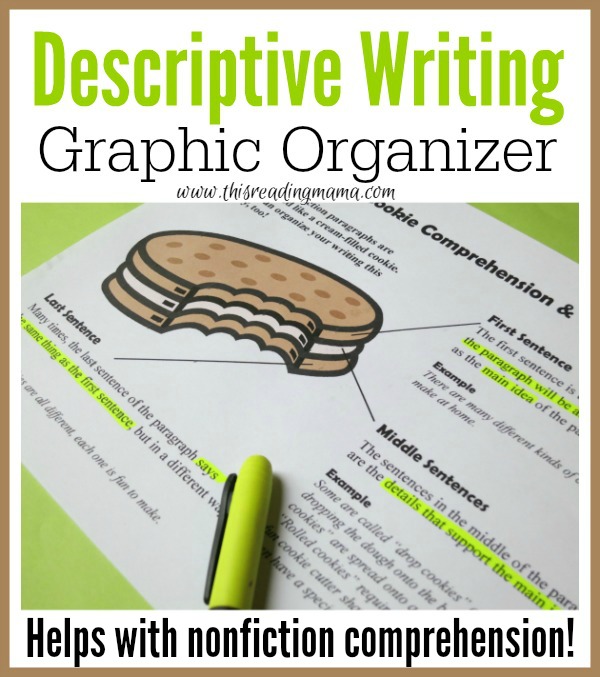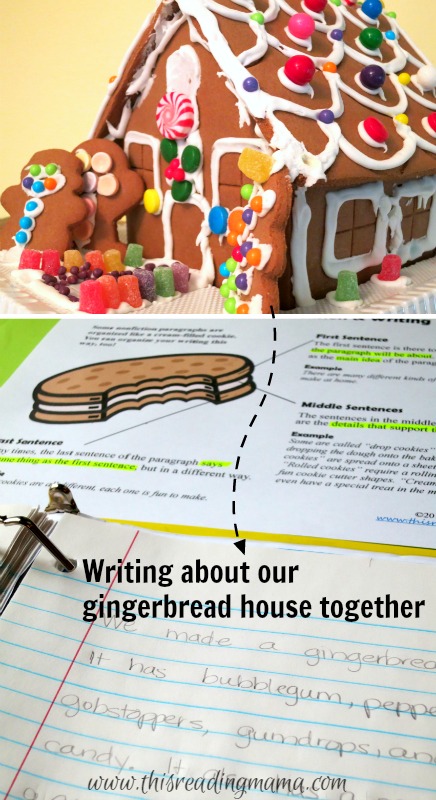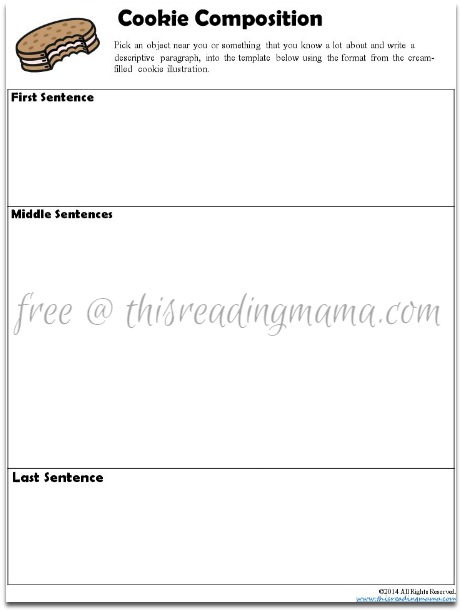As a private reading tutor, one of the things I noticed was that while many of my upper grade students could comprehend fiction texts well, nonfiction was more difficult. Some of this had to do with the lack of exposure to nonfiction, but the majority of the problem came from the way that nonficiton text is organized.
I created a little graphic organizer called Cookie Comprehension to do some basic introductions in the organization of nonfiction paragraphs. These past couple of weeks, ALuv {3rd grade} has been using it to learn about the typical format associated with descriptive writing.

*This post contains affiliate links.
Descriptive Writing Graphic Organizer
This past August, I was pleased when WriteShop asked if I’d use their curriculum with my 3rd grader. We have LOVED it. It is SO flexible and allows me to teach writing as a craft, which is priceless to me.
One of the genres that we have explored is descriptive writing. I was going through my old tutoring files and came across Cookie Comprehension and was so excited to see how well it fit in with our descriptive writing unit. So, I tweaked it a bit, added a few extra pages, and created a Descriptive Writing Graphic Organizer Pack {free download at the end.}
The first thing I did was introduce descriptive writing using the Cookie Comprehension & Composition graphic organizer. I highlighted the important parts so he could clearly see the format of a descriptive paragraph. {Side note: I was careful to say that not all descriptive writing is organized this nicely in a package. But as with teaching any new concept, it’s good to start at a concrete level with simple examples.}
Descriptive Writing Together
Then, following WriteShop’s advice, we picked an object that he could see, touch, feel, etc. and wrote about the object together. Having something that kids can actually touch and see makes it easier for kids to describe.

He picked our gingerbread house. We reviewed the cookie format while writing (opening sentence,supporting details, and closing sentence). While I did all the writing, he helped give me ideas for our descriptive writing.
Independent Writing Time
The next day, he did his own descriptive writing. I let him draw a picture of the object first, as he’s my little artist {he makes all the clip art for our K-2nd Poetry Packs.} Then, he used the template seen below to write his paragraph.

Do you have to use the template with your child? Absolutely not. Feel free to use any kind of paper your child needs to do his/her writing.
Are we finished with descriptive writing? Nope! There is more practice to be had and extensions to learning about descriptive writing. I have a fun idea up my sleeve for him using our Photo Stacking Blocks and am excited to share it soon.
Download our Descriptive Writing Graphic Organizer Pack HERE.
More Writing Activities for Elementary Kids
- Adding Adjectives to Your Writing
- Simple Writing Lessons {12 weeks of writing lesson ideas for K-2nd grades}
- Writing Simple Sentences & Writing Silly Sentences
- Writing Longer Sentences
- How to Write a Friendly Letter
Follow This Reading Mama’s board Writing Ideas for Kids on Pinterest.
Enjoy!
~Becky
Non-fiction is hard for many kids, and that is mainly what they are tested on. Thanks for the great resource